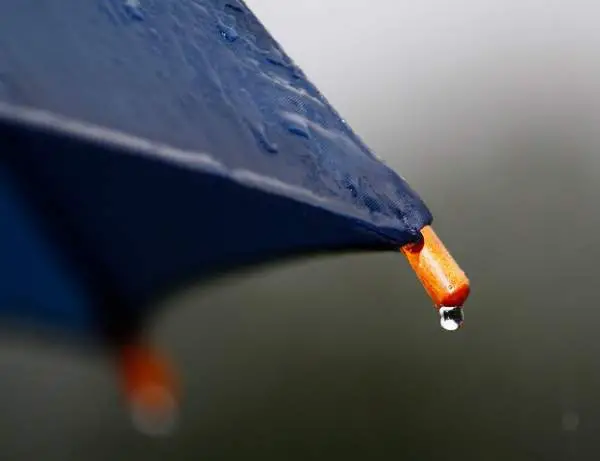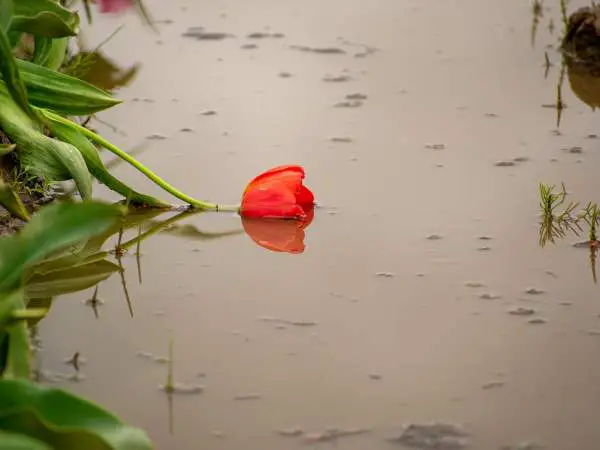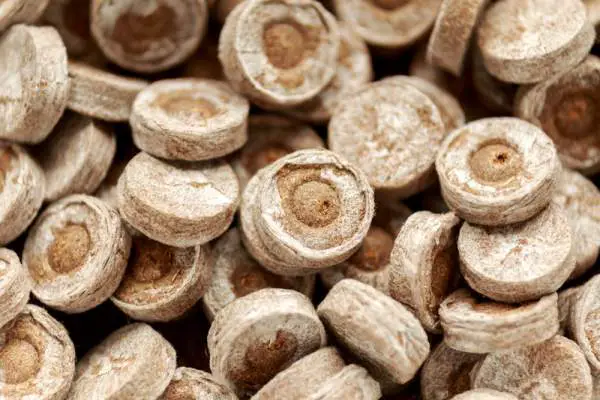Is it possible to overwater hydroponics? Yes, it is possible to overwater hydroponic plants. There are many different facets and reasons why this can happen. Much of it comes down to the type of system.
We will see the areas of weakness in each system, and highlight what new growers need to do to be sure they don’t overwater their plants and cause problems.
What are the types of hydroponic systems?
There are six basic types of hydroponic systems, and the process for delivering water, oxygen, nutrients, and light can be very different between each of these.
- Deepwater Culture (DWC) – A DWC system is simple in construction. The system comprises of a reservoir and a lid or raft, which has holes cut into it for the plants to be suspended. The tips of the roots will hang into the nutrient solution while there is an air pocket where the upper roots can absorb oxygen.
- Nutrient Film Technique (NFT) – This system comprises shallow tubes or troughs where water is pumped through a water pump up to the highest point. From here, the troughs angle downward, and by the force of gravity the solution runs back down and makes its way into the reservoir. The tips of the roots are bathed in this thin stream of solution as it runs under the net pot and the root tips.
- Aeroponics – This method doesn’t use any growing medium like other hydroponic systems. Rather, plants are suspended above water jets, which spray or mist the roots with nutrients and water.
- Wicking Systems – Plants are rooted in a growing medium, which can absorb water. This upper container sits above a reservoir where a wick passes through the bottom of the container into the solution. Water makes its way up the wick and will soak into the growing medium where the plants can make best use of the nutrients.
- Ebb & Flow – These are also known as flood and drain systems. In operation, a flood bed will be filled with a water and nutrient solution, which soaks into the growing medium. Once the pump cuts off by use of a timer, the solution drains back into the reservoir.
- Drip Systems – With these systems, water is pumped through small tubing where it drips onto the growing medium and the plant roots. From there, it drains to the bottom of the pot and makes its way back into the reservoir.
Overwatering in hydroponics can take a couple of different forms depending on how you look at it. If you take each system, it is easy to point at areas where it appears a grower is overwatering. Here is a quick look at how they could be overwatered.
- DWC the reservoir can be filled to high with nutrient solution. This leaves the growing medium saturated all the way through rather than moist at the bottom. One other thing is why plants don’t drown, and that is thanks to an air pump and air stones where the water is filled with dissolved oxygen.
- NFT Systems can suffer from the same problems as DWC. If they have cups, which sit to a certain level, and the nutrient solution is pumping to fast so the height reaches the growing medium, then this will be saturated as well as the roots being submerged.
- Flood and Drain systems can easily overwater plants if the incorrect growing medium is used and it retains too much moisture. Add to this the frequency of flooding the bed. Do this too frequent and plants won’t be able to absorb enough oxygen. Any media needs to drain sufficiently while remaining moist enough between soakings.
- Drips systems can be one of the easiest to control water, yet if your pots don’t have sufficient drainage or the drain hole blocks, these can fill full of water and subsequently overwater your plants.
Growing Media for Hydroponics
One of the primary reasons plants are overwatered is because the incorrect growing medium is used in a system, or it is directly exposed to the solution and remains too wet. The easiest way to prevent this is to understand how each of these mediums performs in retaining moisture, and how they can let oxygen find its way to the roots.
Hydroton Pebbles
These expanded clay pellets are manufactured under high heat. The resulting balls are porous and will retain moisture while offering plenty of support for larger plants. These soak up moisture, yet they don’t remain saturated once the source of the water leaves the growing area. The large gaps between the balls allow water to drain off quickly. You can find these in flood and drain and drip systems more than other systems.
Rockwool
This is one of the more common growing mediums in use, yet Rockwool has the downside of soaking up lots of water. It is this, which when touching a water source can leave plants sitting in water, and leads to rapid suffocation. This will drain, yet it remains moist for longer periods. These can be found in starter plugs or larger blocks. In use, they are often used to cut back on the use of electricity to feed solutions to the plants.
Coco
You can find this in either fiber or chips, and each type offers different water retention properties. Both were once considered a waste product of the coconut industry, yet they were found to be one of the best materials for hydroponic gardens. The coco chips allow more oxygen, so they have a greater degree of drainage. The fiber will hold more moisture and drain slower.
Perlite and Vermiculite
These are two different compounds yet function in a very similar way. They can both wick moisture easily, and are often used as a mixture with another growing media. If these are watered too frequently, they can retain too much water and suffocate plants. Also because of their small size, the amount of oxygen, which can penetrate, is reduced.
River Rock
You can find this in any good garden center or home improvement store. While they don’t offer any capacity for soaking up moisture, they can be used to create good drainage. You often find these used in containers where they are mixed with coco chips. This can retain moisture and will allow lots of oxygen to plants. Many growers use these in the bottom of pots or containers so the growing media doesn’t sit in a puddle of water and remain saturated. If using smaller rocks, it is possible to use these by themselves such as in drip systems, yet watering schedules will have to be adjusted to prevent root drying out.
Oxygen is Key to Prevent Over-Watering
Many growers understand that plants absorb carbon dioxide and throw out oxygen when they photosynthesize. This they do in the right environment during the day, however, they also need to respire. This is where they absorb oxygen through their rooting systems.
Once roots end up standing in water, they suffocate. This means they are unable to breathe, and as the roots are unable to do anything, they can quickly begin to rot.
It is this reason why the choice of growing medium is vital for each kind of system. Growers will need to find the best for their needs as well as make sure that any water levels or frequency of watering are adjusted accordingly. Knowing what to do here can vary between gardens, and a grower will need to carry out careful research to find the best settings.
There are things growers can do to help, and that is by the introduction of extra oxygen. Flood and drain systems and deep-water culture will allow plants pockets of oxygen, yet these are administered in different ways. However, they can still benefit from the introduction of air stones or air diffusers. These use an air pump to fill the water with tiny bubbles and thus deliver this to the roots.
There are two things that can reduce the impact of this that growers need to be aware of. First is the buildup of algae. Live Science defines Algaeas as a “diverse group of aquatic organisms that have the ability to conduct photosynthesis.”
These will absorb oxygen from the water for their own growth. Growers can help rid systems of this by the addition of some hydrogen peroxide. This is also a great way to kill other bacteria.
Next is the temperature of the solution. It causes other problems if it is too high, yet a temperature that is too high will reduce the solution’s capability of retaining dissolved oxygen.
Conclusion
Growers may not intentionally overwater their plants, and they may be doing most things right, yet as soon as the amount of oxygen in the water reduces, be it from a lack of air pump, or the growing medium isn’t suitable for their indoor garden, then plants will suffer.
These are the two primary reasons plants are overwatered, and with some careful thought and experimentation, every grower can eradicate these issues to make sure overwatering is no longer an issue.





